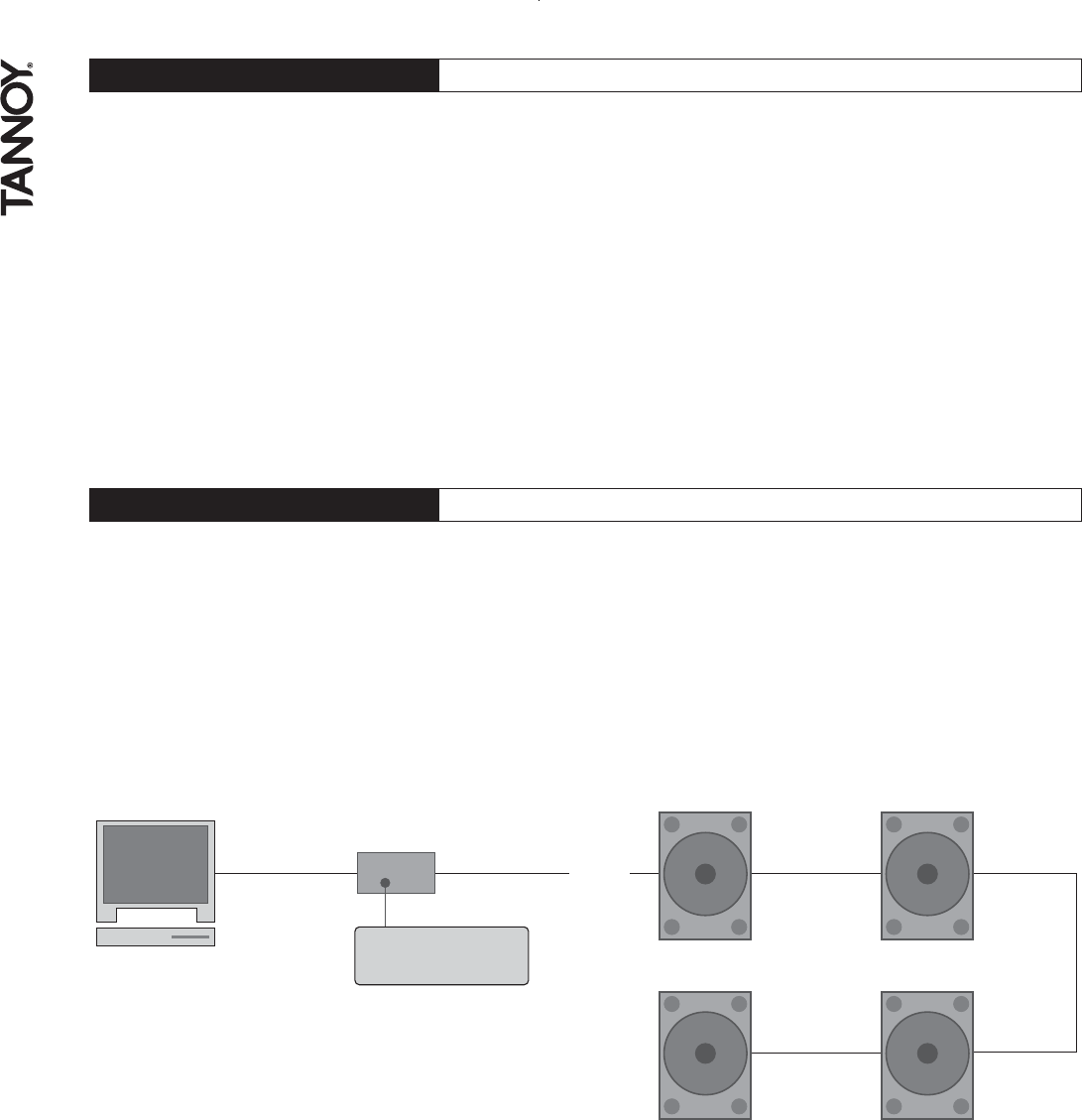
C M Y CM MY CY CMY K
6.0: NETWORK CONNECTIONS
Interconnection between the network computer and the speakers is very straight forward, using twisted pair cable and simple
connectors. The RS485 interface operates on a shared bus so that a single computer can control any amplifier on the bus,
and the computer may gather status information from any device on the bus. Each module contains a unique address so that
no user input will be required to configure network nodes.
It is only data that is carried over the network to control setup functions & ongoing system diagnostics, therefore if a network
fault occurs, audio can still be delivered. This alleviates the problem of total system failure through a single system controller
going down. As each loudspeaker controls it own DSP functions any unforeseen failure would be isolated to only that particular
node .
RS-485 is standard for sending serial data. It uses a pair of wires to send a differential signal over distances up to 4000 feet
(1200m) without a repeater. The differential signal makes it very robust, RS-485 is one of the most popular communications
methods used in industrial applications where it s noise immunity and long-distance capability are a perfect fit.
IMPORTANT: Always run a signal ground with RS-485
Connection from the PC to the network is via a 3
rd
party RS232 to RS485 or USB to RS485 interface. These devices are readily
available from your IT supplier. At the time of writing this manual extensive testing was carried out with the following devices:-
Tannoy USB — RS485 Converter (Part No. 8001 3920)
K2 from KK (www.kksystems.com)
USB-COMi from Easysync (www.easysync.co.uk)
485 SD9R from B&B electronics (www.bb-elec.com)
example network
5.6: USER DSP ON/OFF
A user DSP On/Off switch is provided on the amp panel. This miniature switch is recessed and can be easily activated with a
small screwdriver.
The switch in the OFF position will return the VNET“ loudspeaker back to the original factory settings, this basically means
that any parameter edited in software (EQ, Crossover, Mute, Delay) can be defeated by activating this switch. This can be a
very useful feature. Example:-
In a large corporate production the networked loudspeakers are been used by an operator who has been using the Podware
software for editing EQ & gain & delay; at the end of the performance he mutes the loudspeakers from within the software
and the loudspeakers are returned to hire stock after the performance. Next day there is a rush for a small hire comprising
only a couple of VNET“ loudspeakers. The speakers are taken to the small gig where the operator is not making use of the
Networking, or Podware software in this particular instance. He realizes that he muted the loudspeakers the night before, and
this particular pair had 100ms of delay applied!! All he has to do is flick the USER DSP switch to the OFF position (assuming
he is carrying his Leatherman) and any of the USER editable parameters in Podware are defeated.
8
VNET Series VNET Series
VNET Series VNET Series
RS485 link
RS485 link
RS485
3rd party RS232/
USB to RS485 interface
RS485 link


















